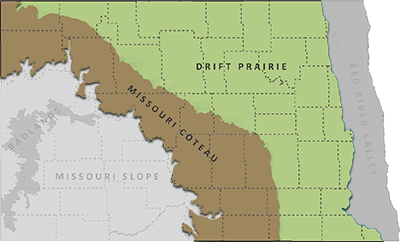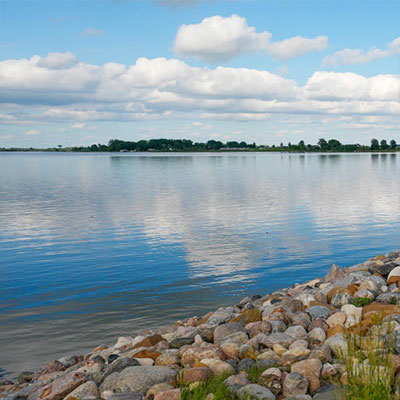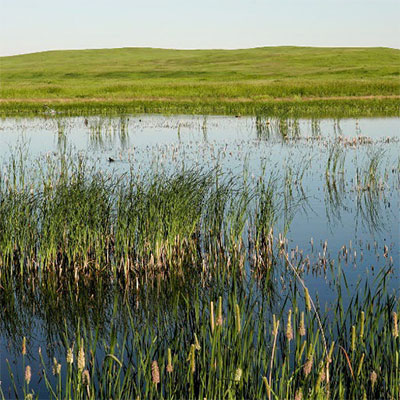Western Grebe

NDGF
L 25”, WS 24”, 3.3 lb. Long white neck with dark stripe on the back of the neck, straight yellowish bill, red eye.
Status in North Dakota
Occurs in North Dakota from early April to mid-December. Peak breeding season late May to late August.
Reason for SWAP Designation
At-risk, ND range important (SGCN b.).
ND ranks 1st out of 16 states for highest percent of global population (24.72%) during the breeding season (eBird).
The Western Grebe is stable to declining and ND has high stewardship responsibility for this species in the Prairie Pothole Region.
Threats
Loss and degradation of wetlands, drainage and wetland consolidation.
Hydrologic shifts in wetlands of the PPR due to wetland consolidation and drainage, climate and land use changes (i.e.
lakeification).
Classified as climate-endangered, Western Grebe is projected to lose more than half of its current distribution by 2050, with no net gains of new areas (Audubon).
Increasing applications of agrochemicals and adverse impacts to water quality, the wetland vegetative community, and the aquatic invertebrate community.
More frequent or intense harmful algal blooms.
Aquatic nuisance species spreading and damaging wetland ecosystems.
Colonial waterbirds are highly susceptible to disease such as botulism or avian influenza.
Western Grebes are sensitive to human disturbance at nest sites.
Recreational boating may destroy nests or entire colonies.
Research and Monitoring
Habitat requirements and demographics have been broadly researched.
Additional information is needed on migration and wintering behaviors.
eBird and Partners in Flight Databases are key sources of information on distribution and population trends.
Poor detection on the Breeding Bird Survey.
The most recent colonial waterbird inventory in ND was conducted in 2014-2015.
Seventy-five colonies were discovered in 30 counties; ~2,556 breeding pairs were estimated (mean colony size 34, range 1-270 pairs).
Management Recommendations
- Preserve wetlands and wetland complexes.
- Restore hydrology and vegetation to degraded wetlands.
- Identify and target high priority landscapes, habitats, and staging areas for protection.
- Follow aquatic nuisance species rules and regulations.
- Follow beneficial or best practices during the design, siting, construction, operation, and maintenance of tallstructures (e.g. transmission lines, communication towers, wind turbines).
- Raise awareness among boaters and outdoor enthusiasts to avoid approaching nesting sites.




